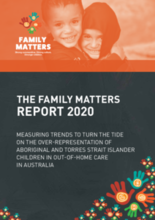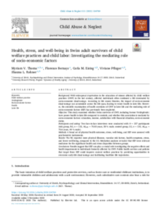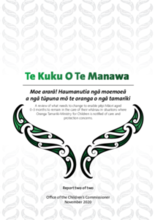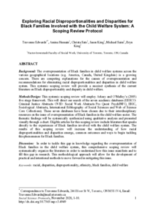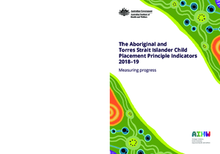Displaying 81 - 90 of 501
This webinar was part of Eurochild’s breakfast webinars to mark World Children’s Day 2020. The webinar looked at how the European Child Guarantee initiative can help address the growing challenge of child poverty, particularly the deepened economic divides that have resulted from the COVID-19 pandemic, and brought the perspective of the Spanish government, which has made the fight against child poverty a particular priority.
This webinar was part of Eurochild's breakfast webinars to mark World Children’s Day 2020. Focusing on the economic arguments for investing in children, this webinar also highlighted Finland’s efforts to prioritise children’s rights and why this makes economic sense.
Family Matters reports focus on what governments are doing to turn the tide on over-representation of Aboriginal and Torres Strait Islander children in out-of-home care and the outcomes for children. They also highlight Aboriginal and Torres Strait Islander-led solutions and call on governments to support and invest in the strengths of Aboriginal and Torres Strait Islander peoples to lead on child wellbeing, development and safety responses for our children.
This paper examines the ways in which anti-oppression and anti-racism perspectives can be included as an aspect of Child and Youth Care (CYC) thought and practice, with particular relevance to service provision for African Canadian families.
This study, a systematic review, examines various forms of housing problems and their relationship to different types of child welfare involvement.
This study examined whether Swiss survivors of child welfare practices (CWP), including former Verdingkinder, have poorer health in later life compared to controls, and whether this association is mediated by socio-economic factors: education, income, satisfaction with financial situation, socio-economic status.
The Children’s Commissioner of New Zealand undertook a thematic review of the policies, processes and practices of Oranga Tamariki Ministry for Children relating to care and protection issues for pēpi Māori (Māori infants) aged 0-3 months. This second report comes to the clear conclusion that to keep pēpi in the care of their whānau, Māori must be recognised as best placed to care for their own.
This systemic scoping review will provide a succinct synthesis of the current literature on Black disproportionality and disparity in child welfare.
This working paper focuses on two critical global challenges: violence against children and climate change. The links between the two are not always obvious, but they exist and are significant in terms of both causes and solutions. Combating the causes of climate change can impact positively on certain contexts in which children are at high risk of experiencing violence.
This report brings together the latest state and territory data on 5 Aboriginal and Torres Strait Islander Child Placement Principle (ATSICPP) indicators that measure and track the application of the Placement and Connection elements of the ATSICPP.

